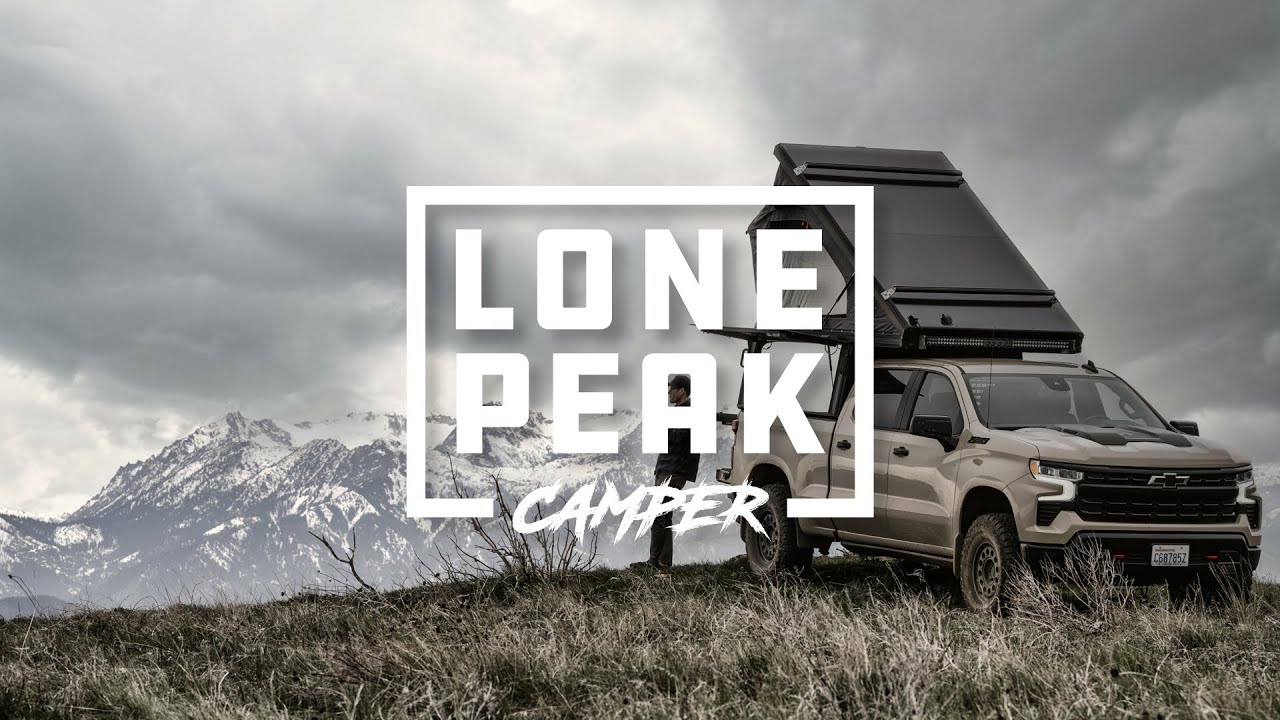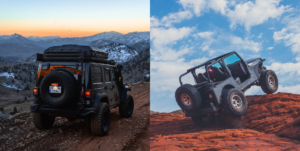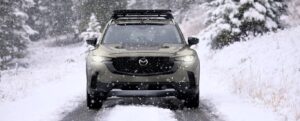The Lone Peak Camper V2 isn’t just a facelift. It adds a redesigned latch and hinge system, a deeper roof seal, stronger mounting hardware, and a slick integrated brake light—plus the same quick 15-second setup, modular accessories, and four-season options that make Lone Peak a standout wedge camper. Read my article on the original Lone Peak Camper here.
⸻
Key Upgrades for the Lone Peak Camper V2 (vs V1)
• Custom, low-profile latch (inside/outside locking): V2 moves to Lone Peak’s own latch that’s designed to resist freezing and leaks, and it can be opened/locked from inside the camper. Day-to-day, that means faster, more secure access in winter and wet weather.
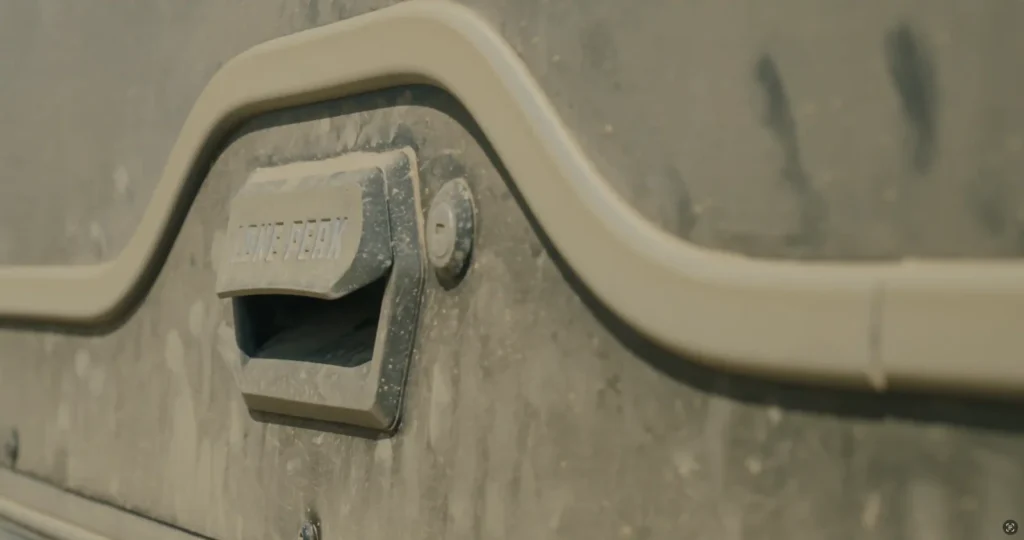
• Redesigned, weather-sealed hinges: The door hinges are now mechanically captive and weatherproof—built to stay aligned and tight through repeated use and storm cycles.
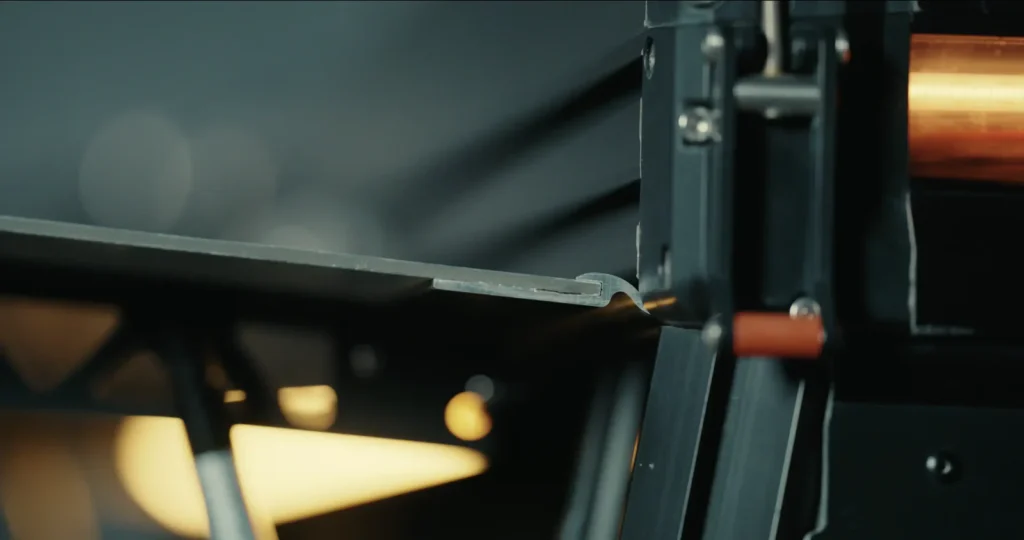
• Deeper, double roof seal: The roof panel is recessed to accept a double seal path, improving water management and dust resistance on long dirt approaches.
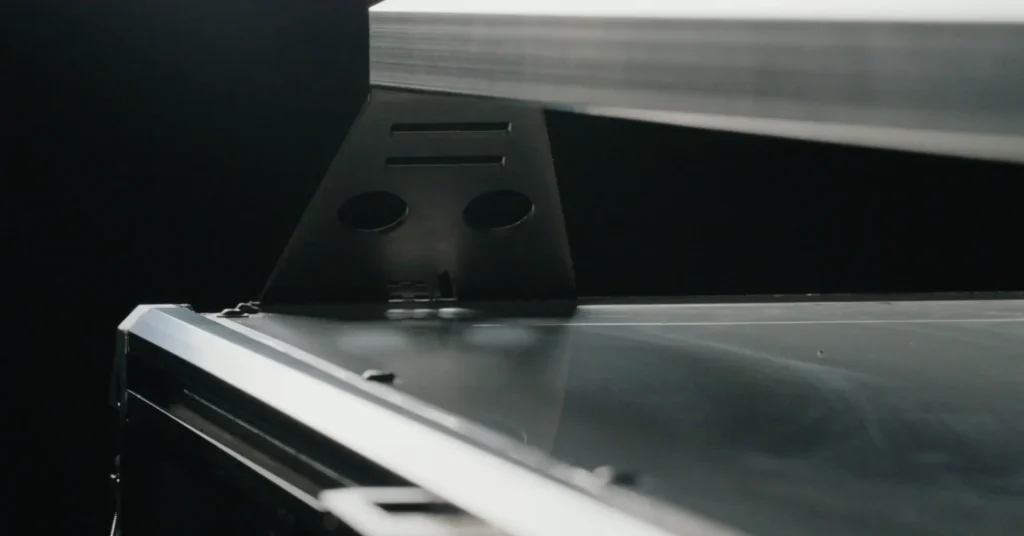
• Gusseted J-hooks (puck mounting): The mounting system adds gussets for extra rigidity, useful when you’re seeing repeated frame twist on technical trails.
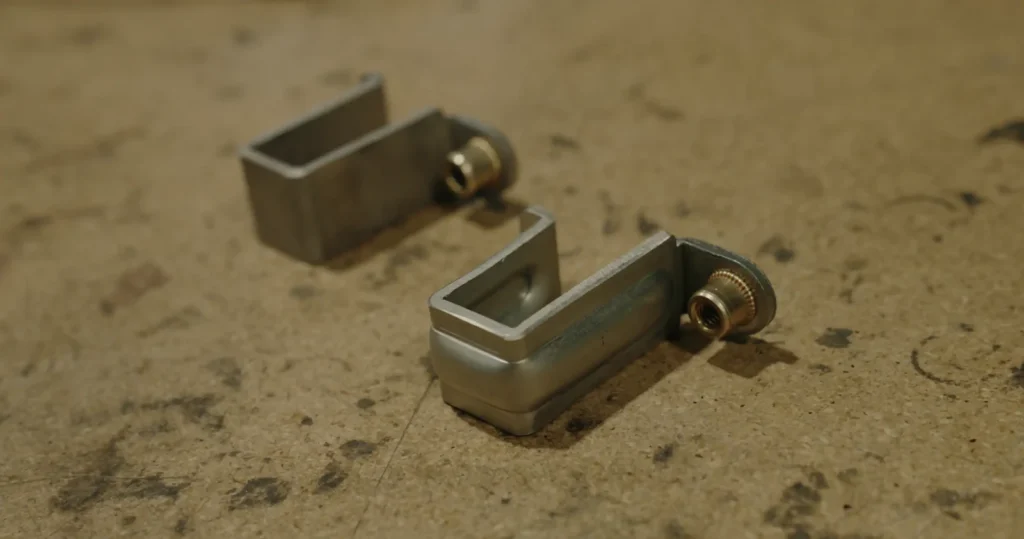
• Integrated rear brake light: Cleanly built into the extrusion for visibility and a more finished install, no extra brackets required.
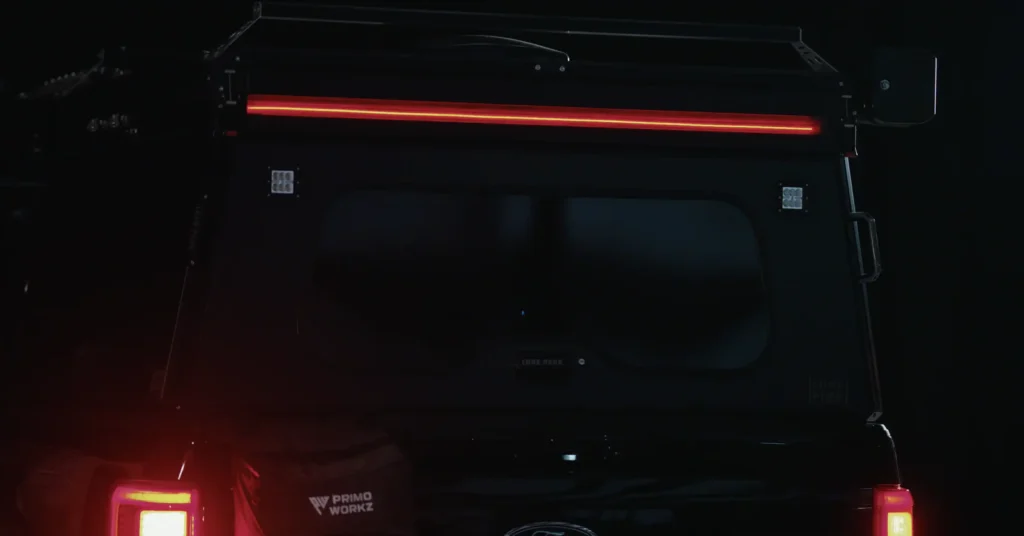
⸻
Core V2 Features & Specs
• Setup time: Lone Peak advertises ~15 seconds to pop, ~30 seconds to pack, so camp happens fast.
• Weight: Mid-size starts ~400 lb; full-size starts ~450 lb. Good balance for daily driving without neutering payload.
• Dimensions: Length ~120”, thickness ~8”, ~2” above cab (low-profile for tree tunnels and garages).
• Sleeping: 4” mattress at 80” length; width ~54” (full-size) or ~50” (mid-size). Push-away bed platform rated to 600 lb.
• Construction: Aluminum extrusions + aluminum composite panels + stainless hardware; tent fabric is polyester canvas with a 5000 mm PU coating for weather protection.
• Roof/Load bars: 80 lb with roof open, 150 lb dynamic closed (+50 lb per added bar). Plan your bikes/boards/recovery tools accordingly.
• Four-season details: Optional diesel heater port, lighting options, and accessory ecosystem (25+ add-ons) to dial in power, storage, and ventilation.
⸻
Real-World Impact of the V2 Changes
• Weather days get easier. Double roof sealing and weather-proofed hinges reduce drip points and dust ingress—handy in shoulder seasons and desert crossings.
• Winter reliability improves. The custom latch is designed to resist freezing and leaks, while still letting you lock from inside. That’s confidence when temps swing overnight.
• Rough-road durability. Gusseted J-hooks add stiffness to the puck system so your shell stays planted when the chassis flexes on ledgy trails.
• Cleaner install & safety. Integrated brake light = fewer add-ons and better visibility.
⸻
V1 vs V2: Quick Comparison Table
| Feature | V1 | V2 (Current) |
|---|---|---|
| Latch | Standard latch | Custom low-profile latch; inside/outside locking; freeze/leak-resistant |
| Door Hinges | Prior design | Mechanically captive, weatherproof redesign |
| Roof Seal | Single pathway | Recessed panel with double seal |
| Mounting (Puck/J-hooks) | Non-gusseted | Gusseted J-hooks for added rigidity |
| Brake Light | Add-on/none | Integrated into extrusion |
| Setup | Fast pop-up | ~15s open / ~30s close (same quick ethos) |
| Weight | Lightweight | ~400 lb (mid) / ~450 lb (full) (comparable class) |
(V1 details shown by contrast; V2 specifics sourced from Lone Peak’s V2 pages.)
Who Should Upgrade?
• Cold-weather and shoulder-season campers: The latch/hinge/seal improvements add meaningful comfort and confidence.
• Trail-heavy users: If you routinely flex a frame on rocky forest roads, the gusseted mounts are a tangible durability win.
• Anyone wanting a cleaner, safer setup: Integrated brake light and single-latch convenience tidy up your build and daily usability.
If your V1 is dialed, dry, and you’re mostly on graded roads, you can keep rolling. But for frequent mountain weather, winter trips, and tougher tracks, V2’s hard-part upgrades are exactly where you feel the difference.
⸻
Pros & Cons (V2)
Pros
• Faster access with single, inside-lockable latch. 
• Better sealing at the roof + weather-proof hinges for storms. 
• Stronger mounting hardware for rough terrain. 
• Modular accessories, lighting, four-season options. 
Cons(not many)
• Still a roof-load compromise with top open (80 lb rating), so plan heavier gear for closed-roof travel days.
⸻
Buying Notes
• Fit & weight: Confirm bed length and payload margin (400–450 lb base). Add your bars, boards, water, and power system before you assume you’re “light.”
• Roof strategy: Keep dynamic loads at or below 150 lb when closed, and distribute across multiple bars (+50 lb each). Stow heavy items inside for trail days.
• Four-season plan: If winter camping is on your calendar, spec the diesel heater port up front.
⸻
Conclusion
The Lone Peak Camper V2 is an excellent choice for overlanders seeking a blend of innovation, comfort, and affordability. Its unique features and thoughtful design make it a top pick for any adventure. Whether you’re a seasoned overlander or new to the scene, the Lone Peak Camper V2 offers everything you need for a comfortable and enjoyable experience on the road.
For more details and to explore the Lone Peak Camper further, visit the Lone Peak Overland website. Don’t forget to use promo code OVERLAND_CAM2025 at checkout for $250 off.
FAQs
How fast is setup, realistically?
Lone Peak quotes ~15 seconds to open; pack-down is ~30 seconds. With practice, that’s accurate. 
Can I carry bikes/boards on top?
Yes. Plan around 150 lb dynamic closed and 80 lb when open; each added load bar raises the rating by 50 lb. 
Is V2 truly more weatherproof?
The latch, hinge, and double-seal roof changes are specifically aimed at freezing rain, wind-driven rain, and dust.

